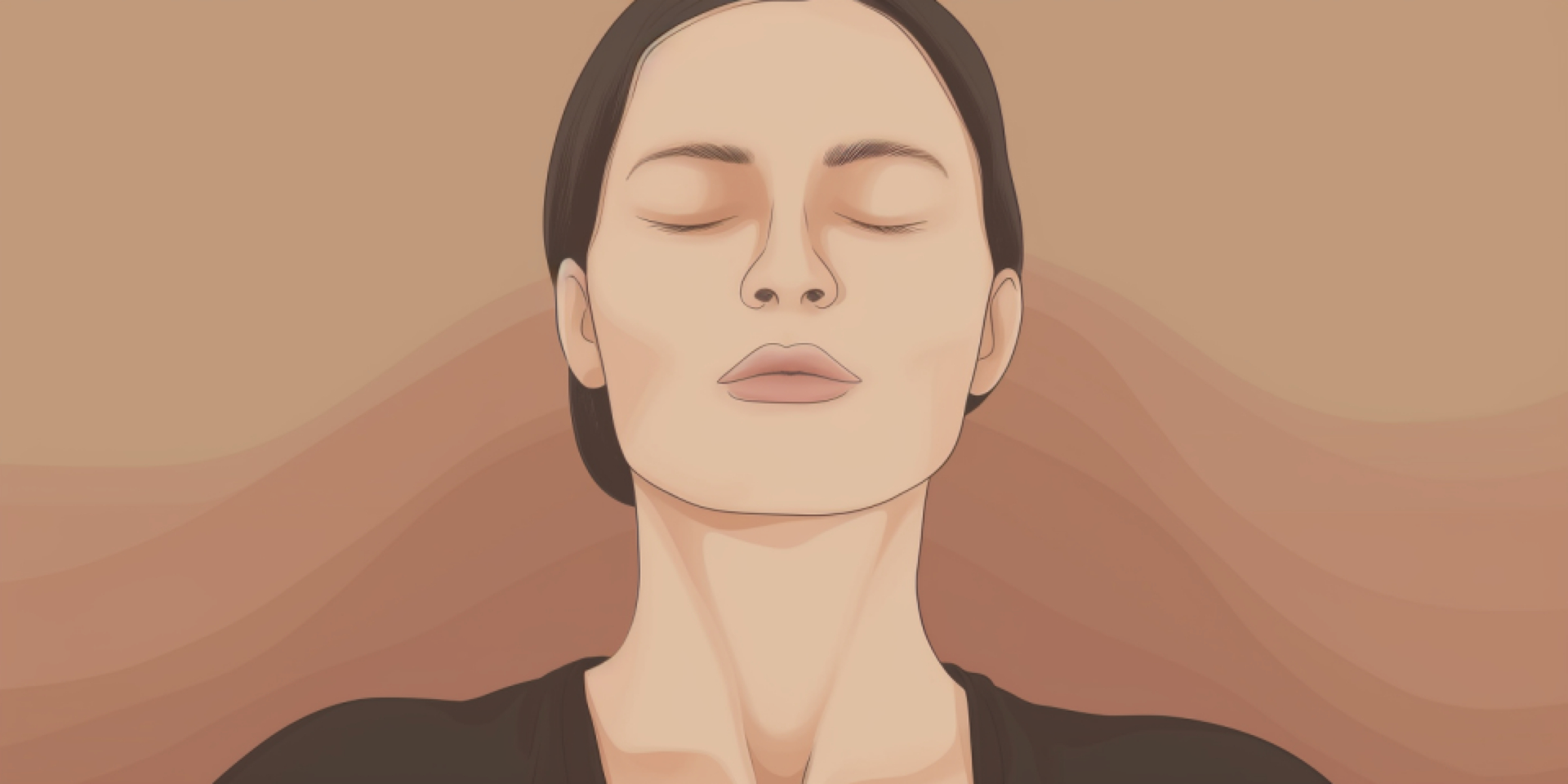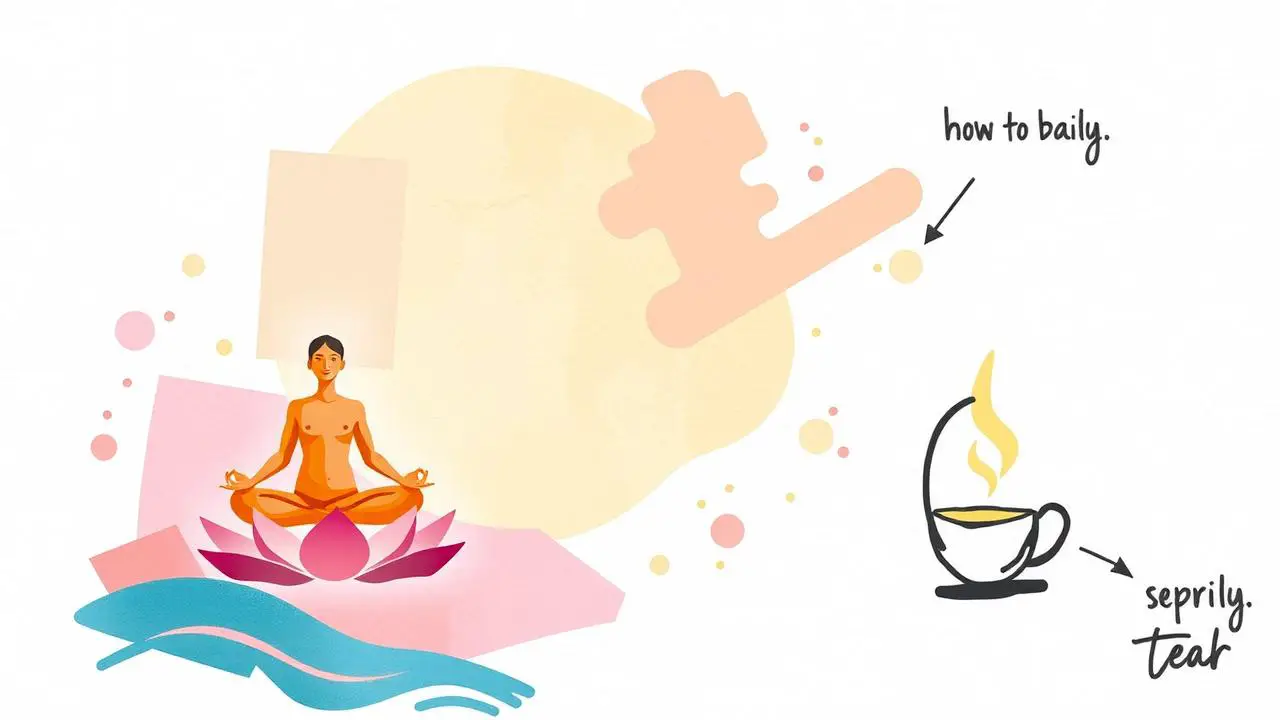Hi everyone, I’m a certified breathwork instructor and today I’m here to talk to you about the 3-part breath technique for deep relaxation. First, let’s consider what a 3 part breath is good for:
A 3 part breath is good for calming the mind, reducing stress and anxiety, improving focus and concentration, increasing energy levels and promoting overall relaxation. It involves deep breathing techniques where you inhale from your belly, ribs, and chest and exhale in a slow and controlled manner.
This powerful breathing exercise is an essential tool for anyone looking to experience a deeper level of relaxation and inner peace. It’s an incredibly simple yet effective practice that’s easy to learn yet has a profound effect on your mental, emotional and physical wellbeing.
The 3-part breath technique works by increasing the oxygen flow in your body while allowing you to connect with your inner self and relax deeply. With regular practice, it can help reduce stress levels, improve sleep quality, increase energy levels, and even alleviate symptoms of anxiety or depression.
In this article, I will guide you through each step of the technique so that you can start experiencing its benefits right away!
What Is The 3-Part Breath Technique?
Have you ever felt stuck in a state of mind that just isn’t serving you? Do you find yourself feeling overwhelmed by thoughts and emotions and unable to shift your focus? If so, it might be time to try the 3-Part Breath Technique.
This simple yet powerful breathing practice has been used for centuries to promote deep relaxation and mental clarity. The 3-Part Breath Technique is a process of mindful breathing that helps bring us into the present moment while promoting healing and balance. It is composed of three parts: inhaling, holding, and exhaling.
As we progress through this breathwork practice, we are able to deepen our connection with ourselves while finding stillness in the midst of chaos. When practicing this technique, our focus should be on controlling each part of the breath cycle with intention and awareness. Each stage should take at least five seconds as we use our breaths to cultivate mental focus and relaxation.
With regular practice, we can begin to unlock all the benefits that come with mastering the basics of conscious breathing.
Benefits Of The 3-Part Breath Technique
The 3-Part Breath Technique is an incredibly powerful tool for deep relaxation, that also brings a host of physical and mental benefits. In this section, we’ll explore the advantages that come with regular practice of this technique.
First off, let’s talk about the physical effects of using this breathwork. Most people report increased energy levels and improved sleep quality. This often leads to better overall functioning in daily life: You’ll be more focused and productive when you have more energy to work with!
Additionally, many practitioners note that they feel their muscles relax more quickly and deeply while using the technique. As your body naturally relaxes and releases tension, it can help to reduce stress-related aches and pains as well.
On the mental side of things, many folks report feeling great clarity after incorporating the 3-Part Breath Technique into their routine. It’s like a mental reset button – allowing you to become present in the moment and clear away any lingering anxieties or worries from your mind.
With regular practice over time, it can even help you become more mindful in your day-to-day life!
In addition to all these amazing benefits, there are some preparations you should make before starting on the 3-Part Breath Technique journey. Stay tuned for our next section on how to get ready for this powerful tool!
Preparing For The 3-Part Breath Technique
Getting ready to do the 3-part breath technique requires some preparation. Just like you wouldn’t jump into a cold lake without taking time to get used to the temperature, you don’t want to dive headfirst into breathwork without taking the proper steps.
To set yourself up for success as a certified breathwork instructor, here are a few tips for preparing your audience for the 3-part breathing technique.
First and foremost, body posture is key when it comes to this exercise. It is important to ensure that your participants are in a comfortable position that allows them to focus on their breathing, so having them sit upright with their feet flat on the ground is ideal. If they choose, they can also lie down in shavasana or another relaxing pose of their choice.
Mental focus is also essential when doing breathwork; it’s important that each participant be able to set aside any distractions and focus exclusively on their own breath. Encouraging mindfulness through guided visualization or other relaxation exercises can help get everyone in the right mindset before they start the 3-part breathing technique.
With these simple steps, you can help your audience achieve deep relaxation and be ready to move on to the core steps of the 3-part breath technique!
The Core Steps Of The 3-Part Breath Technique
I’m so excited to discuss the core steps of the 3-part breath technique for deep relaxation! It’s important to remember that this is a practice, and with practice comes progress. Let’s jump right in:
- First, find a comfortable body posture in which you can relax and be still.
- Second, begin to pay attention to your breath and establish a rhythm by counting your breaths.
- Third, deepen the breath by inhaling and exhaling slowly and evenly.
- Fourth, direct your attention inward as you focus on the inhalation and exhalation.
One of my favorite things about this technique is that it allows us to take control of our breath and use it as an anchor for mindfulness practice. As we focus on our breathing, we become more aware of our bodies, emotions and thoughts.
This self-awareness leads to greater clarity on how we want to feel – empowered and refreshed! By incorporating this technique into our daily routine, we can learn to access deeper states of relaxation anytime – no matter where we are or what situation we’re in.
We can use this powerful tool as a means for enhancing any experience with more peace, joy, clarity and connection with ourselves.
Tips For Practicing The 3-Part Breath Technique
Recent studies have revealed that the 3-part breath technique can help reduce stress levels by up to 68%. This powerful relaxation method involves mindful breathing, intentional posture and gentle movement. With patience and practice, this technique can bring a deep sense of peace and wellbeing.
The key to mastering the 3-part breath technique is to find a comfortable position, be it on the floor or sitting in a chair. Then start focusing your attention on your breath, letting go of any thoughts or worries.
You may choose to listen to some meditation music or visualise something calming to further deepen your relaxation experience.
To make the most out of this exercise, begin by adding some mindful movement into each inhale and exhale cycle. Try swaying your arms gently with each inhale and exhale, allowing your body to settle into its natural rhythm.
By syncing your body movements with your breath, you will soon find yourself drifting off into a state of calmness and presence. From there, you can explore how far you can take your practice without straining yourself in any way.
Common Mistakes To Avoid
When practicing deep relaxation breathwork, it’s important to keep a few common mistakes in mind.
The first is not taking enough time to breathe. It’s essential that you take your time and breathe slowly and deeply, with mindful attention on each breath.
Another mistake is allowing your thoughts to wander. The trick is to stay focused on your breathing, letting all other thoughts drift away. You can even count each breath if it helps you stay focused.
Finally, don’t let any tension linger in your body during the exercise. If you feel tension building up, focus on releasing it from each part of your body as you exhale.
Here’s a quick list of things to remember when working on deep relaxation breathwork:
- Take enough time for slow, deep breaths
- Stay focused on the breath
- Release any tension as you exhale
By avoiding these common mistakes and following these simple tips, you can maximize the benefit of your practice and truly master the 3-part breath technique for deep relaxation. With consistency and dedication, soon you’ll be well versed in this powerful tool for self-care!
Troubleshooting
Now that we have discussed some common mistakes to avoid, let’s move onto troubleshooting.
It’s important to remember that every individual is different and therefore may experience a different journey when utilizing the 3-part breath technique.
If you find yourself struggling with your breathing patterns or not reaching a deep relaxation state, don’t panic! There are several ways to adjust the technique in order to make it more comfortable for you.
The first step is to ensure that your posture is correct and comfortable. If you find yourself tensing up while breathing, try experimenting with different postures until you find the one that works best for you.
It might also be helpful to practice progressive muscle relaxation exercises beforehand in order to loosen any tightness in your body.
Lastly, try focusing on each individual breath without worrying about how many breaths have gone by or what comes next. Focus on the sensation of air entering and exiting your body and allow yourself to simply relax into it without judgement or expectation.
This will help create a calming atmosphere where it’ll be easier for you to explore more advanced practices of breathwork.
Exploring Advanced Practices
As a certified breathwork instructor, I’m passionate about teaching people the power of mindful meditation and mindful movement. Both can be incredibly powerful tools for relaxation and self-awareness, but mastering the 3-part breath technique is an essential step to being able to take full advantage of them.
This technique makes use of the body’s natural rhythms to create a deep sense of physical and mental ease.
When it comes to exploring advanced practices, the 3-part breath technique can be used to increase your overall well-being and sense of calm. By taking time for yourself each day to focus on deepening your breathing, you’ll start to notice changes in how your body responds to stressors or difficult situations.
The deeper breaths also help clear out mental clutter that can prevent us from achieving our goals.
The power of conscious breathing helps us unlock our inner potential and achieve greater control over our physical and emotional states. With practice, this technique can become an integral part of daily life that helps us remain present and connected with ourselves so we can access our highest levels of energy and creativity.
Frequently Asked Questions
How Often Should I Practice The 3-Part Breath Technique?
When it comes to mindful breathing and body awareness, the 3-part breath technique can be a great way to deepen your relaxation.
But how often should you practice this technique?
Well, for the best results, regular practice is key – I recommend doing it at least three times a week.
But even if you don’t have that much time, just taking five minutes out of your day to focus on your breathing can make a big difference.
So give it a try – you may be surprised at how quickly you start to feel more relaxed.
Is The 3-Part Breath Technique Safe For Everyone?
Breathing is like a river that ebbs and flows, filling us with the clarity of mindful meditation.
The 3-part breath technique is a popular practice for deep relaxation but it’s important to ask whether it’s safe for everyone.
Generally, it is considered safe for any healthy individual seeking to deepen their understanding of the power of breathwork.
As a certified instructor, I can confidently say with experience that this technique can help many people find mental clarity and build an increased sense of awareness.
What Is The Best Time Of Day To Practice The 3-Part Breath Technique?
The best time of day to practice the 3-part breath technique is when you can dedicate a few minutes solely for yourself. This allows you to maximize the mental benefits and provide yourself with a sense of deep relaxation.
The duration doesn’t need to be too long, 10-15 minutes should suffice, however, some may prefer longer sessions.
It’s important to take your time and focus on your breathing – listen to your body and be mindful of how it affects you.
Are There Any Physical Risks Associated With The 3-Part Breath Technique?
Mindfully engaging in the 3-part breath technique for deep relaxation can be incredibly beneficial for your mental and physical health, but it’s important to make sure you’re doing it safely.
While there are no major risks associated with mindful meditation or breathing exercises, it is possible to experience some minor discomfort or lightheadedness if you push yourself too far.
As a certified breathwork instructor, I recommend taking it slow and listening to your body as you practice this exercise.
It’s better to start small and work your way up than to rush into something that could make you feel uncomfortable.
Are There Any Other Breathing Techniques I Should Learn In Addition To The 3-Part Breath Technique?
Yes! There are plenty of other breathing techniques you can learn in addition to the 3-part breath technique.
Mindful meditation and yoga breathing are two great ones to start with. They both involve focusing on your breath, using it as a tool for calming and centering the mind.
With mindful meditation, the focus is on bringing awareness to the present moment without judgement or expectation.
Yoga breathing involves taking slow, deep breaths that fill your lungs with air and help to stimulate the nervous system.
Both techniques can help you achieve a sense of relaxation and inner calmness that will help you manage stress more effectively.
Conclusion
The 3-Part Breath Technique is a powerful practice that can help us tap into deep relaxation and nourish our bodies, minds, and souls.
With regular practice, we can experience profound physical and mental changes in our lives. It’s truly an incredible transformation like nothing else!
I highly recommend everyone to try this technique at least once a week for the best results.
Remember to always listen to your body and make sure you’re comfortable before attempting this or any other breathwork exercise.
You will be amazed at how much more relaxed and energized you feel after just one session of the 3-Part Breath Technique.




